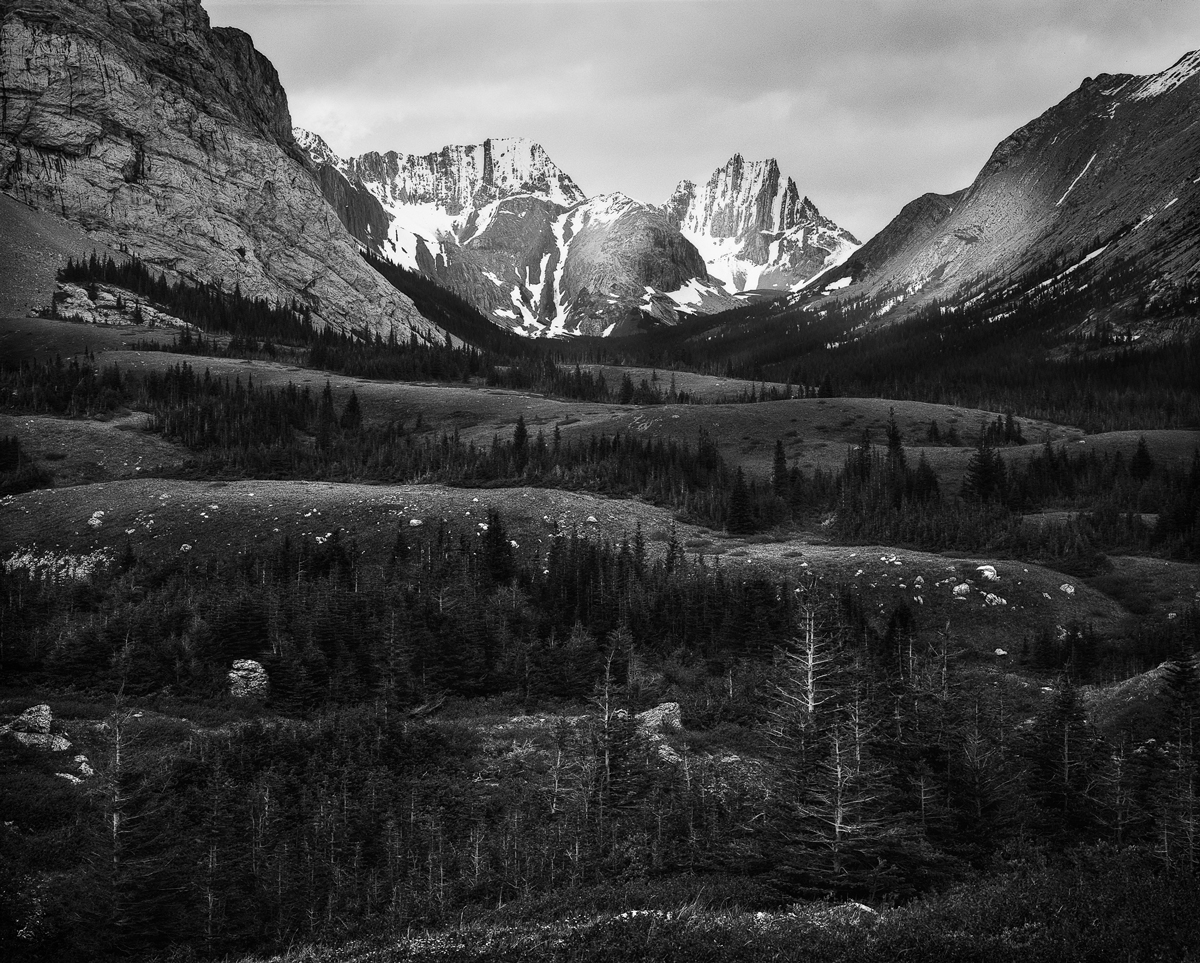How I Got This Picture - Jeremy Calow Posted On 1st September 2020 To How I got this picture

Image title : Tombstone
Technical info
Film Used FP4+ @ 125 Format 4x5
Camera Chamonix 45F-2 Lens Rodenstock Sironar-N 150mm f5.6
Exposure time ⅛ sec
Other equipment Feisol CT3442 Tripod legs, Acratech Ultimate ball head, Pentax digital spot meter

Location Big Elbow Pass in Kananaskis Country in Southern Alberta, Canada
Firstly, tell us the story behind this image. What inspired you to shoot it?:
This is an area I had been scouting for years. Trying to plan the right trip up to capture the meadow seen in the image, specifically under stormy conditions. The trip up to the meadow isn’t overly difficult but most traffic on crumby days stops at the back country campground at the beginning of the pass. Continue on for a few more kilometers of alpine meadow hiking and you’re greeted by this scene looking down the valley towards Tombstone mountain. I picked a day that was filled with moving storms in the area hoping to get a break in the cloud coverage near sunset to allow some drama to come through.
Did you come across any challenges?:
Well compositionally the issue is you want to shoot wide to get all of the surroundings in but there's just sooo much space between the meadow and the background mountains. A wide angle would lose the daunting feeling of standing under the peaks. I chose a normal lens to help retain some of that feeling as well as remove a bunch of the foreground.
The biggest challenge however was the weather. It was too perfect for what I was hoping for, and too violent for shooting large format almost, hehe. The pass acts as a funnel during storms and the wind/rain was driving hard across this image from left to right. I wanted to add a 3 stop soft grad to enhance the mood a bit more but couldn’t keep things steady enough in the wind so I compromised on that. I spot metered off of the rock wall on the left and placed it just over Zone 5, put myself to the side of the camera to hold it as steady as I could and waited for the fast moving clouds to break just enough to get some light across the wall on the right.
What process did you use?
Shooting with my large format does require a more methodical approach. I use an app on my cell phone to “rough sketch” the composition framing based on the lenses I carry with me,. That helps place my tripod. Other than that it’s pretty much the same process all the time with finalize composition. Use my Pentax digital spot meter to narrow down my metering and shutter speed selections and then dry fire the shutter. Load the film and wait for the right moment. In this case it also included waiting for the wind to die down to minimize blur in all of the trees/leaves through the scene.
How did you process it?
I’m relatively new to home developing, so I’ve been trying to keep things as consistent as possible. This allows me to really learn and understand the developer I’m using. This shot was processed with ILFORD’s ID-11 using the Massive Dev Chart as a guide for timing with a 1+1 dilution at 20 deg. I used ILFORD Stop and Rapid Fix to complete with a water prewash to get things started. Once the negative dried I scanned it on my Epson V550 and stitched it together. I did some dust removal and levels to get the contrast back to where I wanted, before doing some dodging and burning locally to the hills and trees in the mid ground to get a better representation of the depth in the scene
What about printing?
So far I’ve only done a quick 8x10 inkjet print on some old Kodak Premium High Gloss paper with my Canon Pixma Pro-100. It does a fine job to get a finished print in my hands and helps close the overall process for me.
About The Author

Jeremy Calow
Jeremy Calow is a Canadian based landscape photographer living just outside the Canadian Rockies.
You can typically find me splitting my time between the Mountains to the west and the Prairies to the east looking for unique areas and scenes. I shoot film because the full experience has reinvigorated my passion for photography and the limitations that you need to adapt to generate new creative avenues to explore. I use both medium and large format cameras depending on the scenario and subject that I am working with.
Jeremy’s web and social links?
Webpage: www.jeremycalowphotography.com
Instagram: www.instagram.com/jeremy.calow
Twitter: www.twitter.com/JeremyCalow






